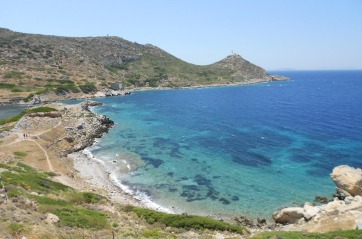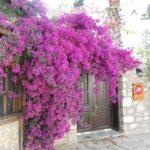The windy cape
Knidos is one of Turkey’s most romantic sites, way out southwest at the far end of the Datça (Reşadiye) Peninsula. You can get here by boat from Datça, or by road if you really don’t want to take to the water.
At one time the site at Knidos covered not just much of the hillside but also the small island just off-shore that is now linked to the mainland by a thin causeway. The island was originally the residential part of town while most of the public buildings were on the mainland.
Backstory
It was the Dorians who founded a colony here in around 400 BC.
Even today the cape is stormy and sailors can find themselves unable to navigate it. In the past, mariners were often marooned here for days on end, and the locals grew fat on the proceeds of catering for their needs.
Probably the most famous individual to find himself inadvertently holed up here was St Paul, who was on his way to stand trial in Rome in 59-60 AD when his ship was forced to drop anchor in Knidos and wait for more favourable winds.
Aphrodite of Knidos The circular Temple of Aphrodite was once renowned for a statue of the goddess of love created by the famous fourth-century BC Athenian sculptor Praxiteles. As the story goes, he originally created two statues of Aphrodite, one naked and one clothed, and offered them to the citizens of Kos. They chose the clothed version, leaving the unclothed version for the Knidians. Rumours of the statue’s beauty soon swept what was then Asia Minor, and King Nicomedia of Bithynia offered to pay off all the city-state’s debts if the Knidians would sell it to him. This they refused to do and somehow the statue ended up in İstanbul (then Byzantium), gracing the Palace of Lauros. After that, its fate is unknown although many people will know what the statue looks like without realising it as a result of all the copies that were made of it later.
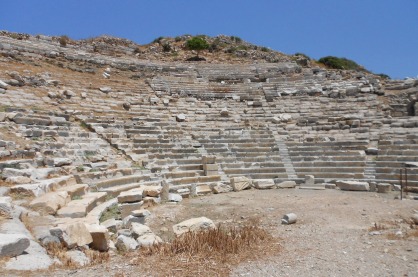 Around the site
Around the site
Landing at Knidos today you will find yourself coming straight to a large area cleared by archaeologists where a stoa once ran along the back of a vast agora. Here remains of a temple to Dionysius have been uncovered with a church built over them at a later date.
Well to one side of it is a theatre that dates back to Hellenistic times and which could probably have seated 5,000 in the past. The remains that survive today are mainly from a remodelling in the 1st or 2nd century.
If you climb the hill behind the agora you will soon pass something very unusual: a freestanding Roman sundial. 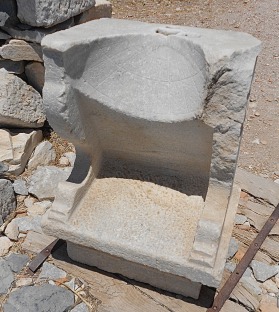 Nearby are the remains of a bouleterion (council house) and temple with Corinthian columns; the deity to whom it was dedicated appears to be unknown. Also nearby are the remains of a temple and stepped altar dedicated to Apollo Karneios and dating back to the 2nd century BC.
Nearby are the remains of a bouleterion (council house) and temple with Corinthian columns; the deity to whom it was dedicated appears to be unknown. Also nearby are the remains of a temple and stepped altar dedicated to Apollo Karneios and dating back to the 2nd century BC.
More important are the remains of the circular temple (tholos) to Aphrodite in a magnificent position looking straight out to sea. It is surrounded by the remains of what may have been storerooms for treasure and a dormitory for visitors. The surviving complex dates back to the second century AD.
Many of the buildings at Knidos were erected on artificial terraces and some of the marble staircases leading up to them still survive today.
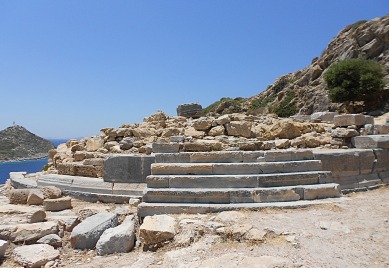 Temple to Aphrodite that once housed the famous statueTransport info
Temple to Aphrodite that once housed the famous statueTransport info
In the summer excursion boats regularly sail from Datça to Knidos. However, they allow barely enough time to rush round the main structures before heading out again. They make for a great and restful day out but those who’re serious about their sightseeing will be better off visiting under their own steam.
It’s also possible (if expensive) to get here by taxi or to drive along the new road from Datça.
Nearby areas
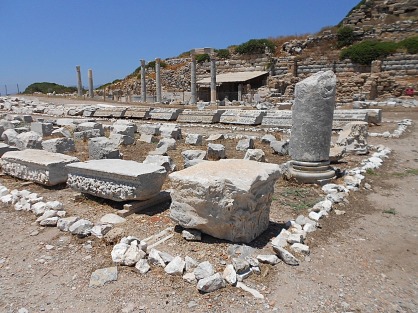 Remains of the agora with the stoa at the back
Remains of the agora with the stoa at the back
